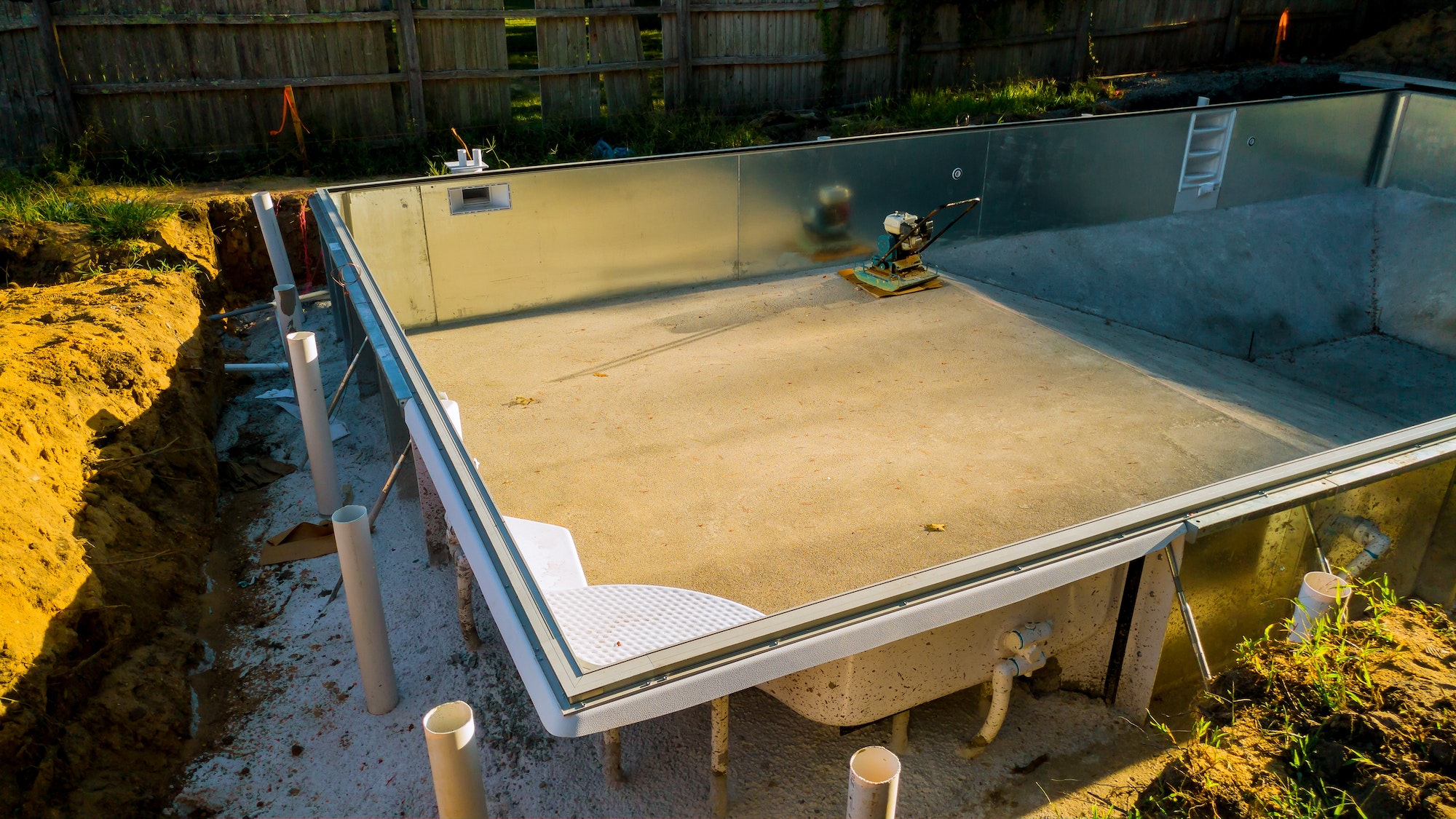
What planning permission is required to build or install a swimming pool?
Your pool project is defined, the decision is made and the quotations are launched. However, you are wondering about the administrative steps necessary for this installation and about the urban planning rules that could possibly be opposed to your project. The necessary planning permission depends on the choice of an in-ground pool or not, whether it is covered or not, its dimensions and its accessories.
Here is a summary of these rules.
Which authorization for an in-ground basin ?
The planning permission to be requested from the town hall depends on the surface of the basin and its cover.
If the surface of the pond is less than (or equal to) 10 m2, the basin can in principle be created without any planning permission. However, if your land is located in a protected area[1], a prior declaration will be required.
Between 10 and 100 m2, the creation of the basin will be subject to prior declaration.
Beyond 100 m2, a building permit must be obtained.
Covering the pool with a low cover (e.g. a tarpaulin) does not change the nature of the authorization required. On the other hand, if you plan to cover the basin with a cover higher than 1.80 meters, a building permit must be obtained in all cases.
What permission is required for an above ground pool?
The planning permission depends on whether the pool is permanent or not.
When the pool is installed less than three months per year (or 15 days in a protected area[2]), no planning permission is required, regardless of the surface area of the basin.
When the pool is installed permanently, the regulations applicable to in-ground basins become applicable again.
Below 10 m2, the basin can be created without planning permission (except if the land is located in a protected area1).
Between 10 and 100 m2, the creation of the basin will be subject to prior declaration.
Beyond 100 m2, a building permit must be obtained.
If the pool is more than 1.80 meters high (covered or not), a building permit must be obtained in all cases.
What urban planning rules can be opposed to the construction of a pool?
The construction of the basin must comply with the rules of the local urban plan in force, including when the project is not subject to any formality. The rules of the local urban planning document may thus prohibit the installation of a swimming pool or provide for rules relating to its location on the plot.
For example, it can impose the installation of the pool on the separating line. In this case, it is the pool, its cover, the coping and the terrace surrounding the basin that must be installed on the boundary (and not the basin itself).
It is preferable to contact the city’s urban planning department in order to consult the applicable rules before embarking on the construction of your pool project.
What are the risks of building without planning permission?
The construction or installation of a swimming pool without obtaining the necessary administrative authorization constitutes a breach of urban planning and is punishable by a fine of between 1,200 euros and an amount not exceeding 6,000 euros per m2 of built surface.
The municipality may also request the demolition of the basin.
The absence of authorization can also block a sale project, and this information must be transmitted to the buyer[3].
In this case, however, the illegal situation can be regularized by obtaining a prior declaration or a building permit, provided that the local urban plan authorizes it. This procedure is similar to the one to be followed in the case of a new construction and is subject to the same instruction delays.
Finally, the buried or permanently installed swimming pool must be declared to the tax authorities. Its existence will be taken into consideration for the calculation of the property tax and the housing tax.
Please note that the search for undeclared pools by the tax authorities has recently been facilitated by the use of aerial photographs on Google Maps.
The risk of not declaring a pool is therefore non-negligible.
[1] That is to say, within the perimeter of remarkable heritage sites, in the vicinity of historical monuments, in a classified site or in the process of being classified, in nature reserves, in areas destined to be classified in the heart of a future national park and within the heart of national parks.
[2] This time understood as land located in classified sites or sites awaiting classification, in the perimeter of remarkable heritage sites, in the vicinity of historical monuments and in areas justifying special protection and delimited by a justified deliberation of the municipal council or the deliberating body of the public establishment of inter-communal cooperation competent in matters of local urban planning.
[3] Silence on this point must be analyzed as a hidden defect allowing the buyer to obtain a reduction in the sale price or the cancellation of the sale
Are you still wondering about the necessary authorization or the feasibility of your project with regard to the rules of the local urban plan? AGN Avocats can assist you in the realization of your project. Do not hesitate to contact us by phone or e-mail or to make an appointment online at www.agn-avocats.com.
AGN AVOCATS – Urban Planning Department
09 72 34 24 72






